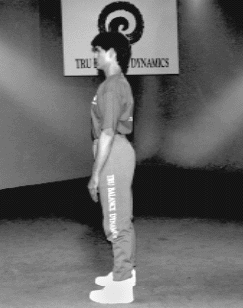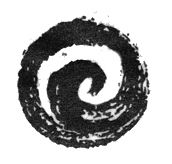True Balance Dynamics (original) (raw)
- Home
- Biography
- Philosophy
- Tru Balance Dynamics
- Ba Gua Zhang
- Xing Yi Quan
- Tai Chi Quan
- Books & Videos
- Seminars & Classes
- Links
- Discussion Board
- Brazillian Jiu Jitsu History
- DVDs
 Tru Balance Dynamics provides a simple and immediately effective method which allows the body to return to its natural state of balance and freedom from stress. Through the application of Tru Balance Dynamics principles, old habits of postural misalignment and physical misuse are replaced by the body's own innate balancing processes. The uninhibited functioning of these processes make possible the effortless movement and natural stress-free use of the body we all knew as small children.
Tru Balance Dynamics provides a simple and immediately effective method which allows the body to return to its natural state of balance and freedom from stress. Through the application of Tru Balance Dynamics principles, old habits of postural misalignment and physical misuse are replaced by the body's own innate balancing processes. The uninhibited functioning of these processes make possible the effortless movement and natural stress-free use of the body we all knew as small children.
As small children we moved and functioned without stress or excess tension and naturally retained perfect postural alignment without conscious control. physical problems arise as we grow to maturity and are required to spend extended periods of time sitting in chairs, begin playing various sports and games, and mimic models whose own posture is less than ideal. As we grow older bad habits of physical use are gradually imposed over our body's natural sense of balance and alignment, and the misaligned body under the constant downward pull of gravity begins to have problems.
The human body, perfectly capable of functioning problem free as long as inborn balancing mechanisms are allowed to function undisturbed, now begins to experience a whole range of physical problems brought on by acquired bad habits of movement and alignment. As shoulders slump, undue pressure is put on the heart, and lung capacity diminishes. The back muscles become continually tense to compensate for the imbalanced posture causing headaches, chronic back pain and predisposing one to injury, while the stomach muscles become slack and weak. The internal organs are displaced downward, impairing their function and giving one a "potbelly." Joints become stiff and muscles lose their tone. In this state true relaxation becomes impossible, as does peak physical performance of any kind.
Much time, effort and money is spent on the treatment of these problems. But such treatment is at best partial and temporary, as the root of the problem, poor postural alignment and incorrect movement, is never corrected. Tru Balance Dynamics provides simple mental directives, reinforced by carefully designed movements which allow one to release bad habits of body use and lets the body return to its natural state of effortless motion, freedom from stress and removes the barriers to peak physical performance.
All things in the natural world, from the incredibly vast to the infinitesimally small, move in a dynamic balance. The innate tendency of all movement in nature is toward equilibrium, an inborn return to balance should there be a disruption. Natural systems left uninterrupted are self-adjusting, their innate capabilities keep things in balance should a disruptive event occur. The human body also operates in dynamic balance. The innate capabilities of the body are constantly making adjustments to keep the body in balance (when energy is low we feel hungry and eat to restore the balance, when we have taxed our body enough it craves rest so we sleep to restore the balance, when we overheat the body sweats to cool us and restore the balance, etc.). But the most overlooked, and perhaps the singularly most important balance the human entity needs to maintain is the actual physical balance of the body itself, that is, the anatomical positioning and postural alignment of the body. The important point is this. Once the body's natural postural balance is disrupted, even to a slight degree, not only is the inherent strength and efficiency of motion the bodv possesses greatly reduced but also postural misalignment which becomes habitual inevitably leads to physical problems (including back pain, pain in the joints, loss of strength and flexibility, sagging breasts, protruding abdomens which cause a displacement of the internal organs as well as pressure on the heart and lungs...).
Why do so many things go wrong when one is out of postural balance? The answer is gravity. From the moment we are born; we are under gravity's influence. Standing, sitting or lying down, in motion or at rest, we never escape its effects. However, the human body is designed to function problem free in the gravitational field. Problems usually arise when the body is out of balance. When one stands or moves out of balance one must constantly "fight" gravity rather than flowing through it. Imagine for a moment a telephone pole balanced perfectly upright on the ground. Not only could you steady it with two fingers, it would feel weightless. But what would happen if the pole tilted even slightly off center? The pull of gravity would cause the pole to feel immensely heavy, and no matter how strong you were you could not keep it from falling. The same principle can be applied to the human body. When held balanced there is no strain, all the muscles are in tune (relaxed, neither too tense nor too slack). The chest is open so the heart and lungs have ample space without pressure, the stomach wall is in tone so there is no sag and the organs are held in proper position. The spine is aligned and there is no strain. One feels light and comfortable and movement seems effortless. But once balance is lost, the "fight" against gravity begins.
The body is not meant to fight against gravity, it is designed to be balanced within the gravitational field. This balance is not static but rather dynamic, and functions constantly and effortlessly if it is allowed to. I emphasize the words "'allowed to" because no amount of conscious posture holding or straining to "stand up straight" will ever achieve the goal of true balance.
We need only look at small children, and we will see the effortless maintenance of perfect postural alignment. Although dynamic postural alignment is an innate characteristic of human functioning, what happens is, in effect, we "learn" to hold ourselves and move "out of balance". Once poor anatomical use becomes a habit, postural imbalance comes to "feel" normal and natural and we wonder why things are hurting.
If we can "learn" to hold ourselves and move out of balance, we can certainly learn to move again in perfect balance. This relearning of true balance is really a remembering, an "unlearning" of bad habits and a return to our natural balanced state, the way we were as children. It is crucial to understanding the following point. Since correct postural alignment and the maintenance of true balance is the natural state, one may only "allow" the innate mechanisms of the body to work to keep us in true balance. one must not physically "do" anything to achieve correct posture. What this means is all the "work" must be mentally directed, overt physical maneuverings only replace one bad habit with another. What is required is constant awareness. By being aware and directing the body with the mind one will "fulfill the requirements" for true postural balance and the body's innate functions will take care of the rest. The work must be done mentally through awareness, as any conscious physical adjustments cause undue tension and any excess tension or slack anywhere in the body cause postural imbalance. After a period of awareness of one's own physical state that allows the body to balance itself, the body will regain its "habit" of correct postural balance and its innate abilities will keep it so.
Besides removing the source of much physical suffering, true postural balance will allow the individual to reach his or her absolute peak performance in any physical endeavor. When out of balance the body cannot perform at its best. Imbalance causes excessive tension in some muscles and excess slack in others, which destroys the integrity of body motion and impedes physical performance. Another point worthy of attention is that exercise done in improper postural alignment can be and often is actually harmful. because it can magnify the existing stress of misalignment. rather than being beneficial. But on the positive side, even very simple exercise done in true postural balance can be very beneficial, which amounts to large gains for little effort.
So, correct postural balance is basic to wellbeing. Its effects will be felt in every movement in every activity. All that is required is an awareness of one's physical state, which will allow the body to balance itself. Once achieved, true balance will remove the very cause of much physical suffering as well as bringing about an integration of mind and body which makes it possible for the individual to realize his or her potential in physical performance.

